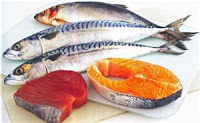McDonald’s Adds Calorie Counts to Menu...
This is BIG news and I think this article from Shape Magazine sums it up very nicely! I for one have never been a big fan of these "fast food" chains, but I am so glad to see these changes. Some people might not care or even look at this information, but at least the information is getting out there and it could help!
McDonald’s announced that the chain will be posting calorie counts on menu boards in stores and at drive-thrus in order to help customers make better choices prior to the federal mandate to display this information. “We’re really listening to our customers, and they are telling us that they want more nutrition information before placing their order at McDonald’s,” says Cindy Goody, senior director of nutrition at McDonald’s. This is a great step in the right direction, but is it enough to really make better choices?
Menu boards will only post calorie counts; all other nutritional information such as fat, sodium, sugar, and cholesterol content will not be displayed. “Calories is the common denominator from which fat, saturated fat, and all the other nutrition that you find on a nutrition facts label comes from," Goody says. "It's kind of that unifying element.”
Unfortunately this isn’t entirely true. Sodium, for example, carries no calories but poses its own health risks such as high blood pressure and stomach cancer. “We have to remember that calories aren't everything," says Rania Batayneh, MPH. "Quality of calories is more important, as that relates directly to what your meal consists of. There is a big difference between a fried chicken sandwich that may come in at fewer calories than a piece of baked chicken with half a cup of wild rice and vegetables."
Here are a few McDonald’s orders that don't seem so bad on the menu, but should never be mistaken as "healthy":
Big Mac: 550 calories
The infamous burger packs 29 grams of fat, one gram more than an entire serving of cheese ravioli with meat sauce from Olive Garden—and that’s a huge portion!
Frozen Strawberry Lemonade: 200 calories
Sipping down this fruity beverage’s 51 grams of sugar is like eating two slices of chocolate cake with frosting.
Bacon, Egg, & Cheese Biscuit: 480 calories
This breakfast will have you starting your day with 235 milligrams of cholesterol. You could save that for a 10-ounce rib-eye steak at dinner!
Premium Grilled Chicken Club Sandwich: 460 calories
It may be grilled, but this sandwich sets you back 1,030 milligrams of sodium. You’d have to eat two-thirds of a 10-ounce bag of potato chips to consume that much salt.
McRib: 500 calories
Would you ever lick up an entire cup of whipped cream? Because this classic has the same amount of saturated fat: 10 grams!
If the calorie counts aren’t enough for you, all McDonald’s stores provide brochures with expanded nutritional content, and this information can be found on the back of tray liners as well. There's also McDonald’s online nutrition calculator and their mobile app if you want to know more about your order.
And you can always customize your order, as Goody recommends. Holding just one serving of the spicy buffalo sauce can save you 540 milligrams of sodium, and cutting a slice of cheese nixes 15 milligrams of cholesterol. That can really add up (we're talking about you, Double Quarter Pounder with Cheese)!
Bottom line, if posting calorie counts makes customers look at the foods before ordering and raises awareness of what we are really consuming, than that’s a good thing. What do you think? Will the new calorie counts make you think twice about your favorite fast food order? Please share in the comments below.




















